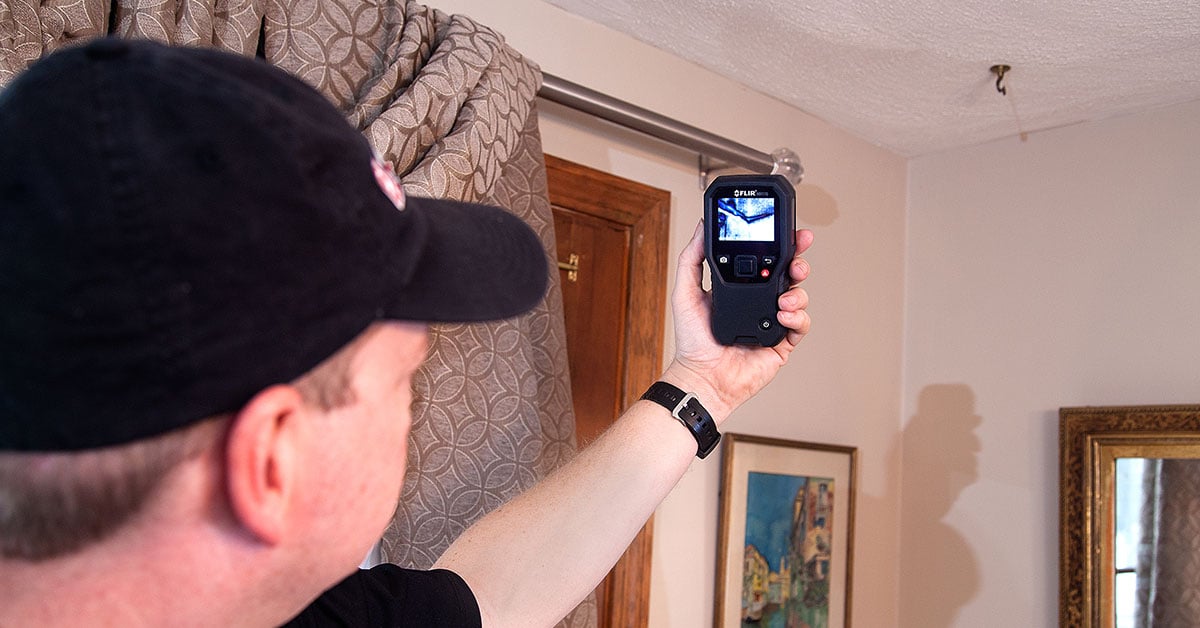Just how to Discover and Repair Water Leaks-- A Comprehensive Overview
Just how to Discover and Repair Water Leaks-- A Comprehensive Overview
Blog Article
We've encountered this great article involving Hacks to detect leaks below on the web and figured it made sense to discuss it with you in this article.

Early detection of leaking water lines can mitigate a prospective catastrophe. Some small water leakages might not be noticeable.
1. Check Out the Water Meter
Every residence has a water meter. Examining it is a surefire manner in which aids you uncover leakages. For beginners, switch off all the water resources. Ensure no one will flush, use the tap, shower, run the cleaning equipment or dish washer. From there, most likely to the meter as well as watch if it will transform. Since no person is utilizing it, there need to be no movements. If it moves, that indicates a fast-moving leakage. If you find no adjustments, wait a hr or two and check back once more. This suggests you might have a slow-moving leakage that might even be below ground.
2. Inspect Water Consumption
If you find sudden modifications, despite your intake being the exact same, it suggests that you have leaks in your plumbing system. An abrupt spike in your expense indicates a fast-moving leak.
A steady boost every month, even with the exact same behaviors, shows you have a sluggish leakage that's also slowly rising. Call a plumber to thoroughly inspect your residential or commercial property, specifically if you feel a warm location on your flooring with piping underneath.
3. Do a Food Coloring Test
When it comes to water usage, 30% originates from bathrooms. Test to see if they are running effectively. Drop specks of food shade in the container and wait 10 minutes. If the shade in some way infiltrates your dish during that time without flushing, there's a leak between the tank as well as dish.
4. Asses Outside Lines
Do not neglect to examine your outside water lines as well. Ought to water leak out of the connection, you have a loosened rubber gasket. One little leakage can squander lots of water as well as spike your water costs.
5. Check and also Examine the Circumstance
Home owners need to make it a routine to examine under the sink counters and also even inside cabinets for any type of bad odor or mold and mildew growth. These two red flags suggest a leakage so punctual focus is needed. Doing routine inspections, also bi-annually, can conserve you from a significant problem.
A lot more significantly, if you know your house is currently old, keep a watchful eye on your heating units, pipes, pipelines etc. Look for discolorations and compromising as a lot of pipelines and also appliances have a life expectancy. They will certainly also normally deteriorate as a result of tear as well as use. Don't wait for it to intensify if you think leaking water lines in your plumbing system. Call a professional plumber right away so you don't end up with a horrible mess in your house.
Early detection of leaking water lines can minimize a prospective catastrophe. Some tiny water leakages may not be noticeable. Inspecting it is a surefire means that assists you discover leaks. One little leak can throw away bunches of water and also surge your water bill.
If you suspect dripping water lines in your plumbing system, do not wait for it to rise.
WARNING SIGNS OF WATER LEAKAGE BEHIND THE WALL
PERSISTENT MUSTY ODORS
As water slowly drips from a leaky pipe inside the wall, flooring and sheetrock stay damp and develop an odor similar to wet cardboard. It generates a musty smell that can help you find hidden leaks.
MOLD IN UNUSUAL AREAS
Mold usually grows in wet areas like kitchens, baths and laundry rooms. If you spot the stuff on walls or baseboards in other rooms of the house, it’s a good indicator of undetected water leaks.
STAINS THAT GROW
When mold thrives around a leaky pipe, it sometimes takes hold on the inside surface of the affected wall. A growing stain on otherwise clean sheetrock is often your sign of a hidden plumbing problem.
PEELING OR BUBBLING WALLPAPER / PAINT
This clue is easy to miss in rooms that don’t get much use. When you see wallpaper separating along seams or paint bubbling or flaking off the wall, blame sheetrock that stays wet because of an undetected leak.
BUCKLED CEILINGS AND STAINED FLOORS
If ceilings or floors in bathrooms, kitchens or laundry areas develop structural problems, don’t rule out constant damp inside the walls. Wet sheetrock can affect adjacent framing, flooring and ceilings.
https://www.servicemasterbyzaba.com/blog/how-to-detect-water-leakage-in-walls/

I was made aware of that report about Leaking water lines from a friend on another web blog. In case you enjoyed our post please don't forget to pass it around. Thanks a lot for your time. Kindly stop by our blog back soon.
Report this page